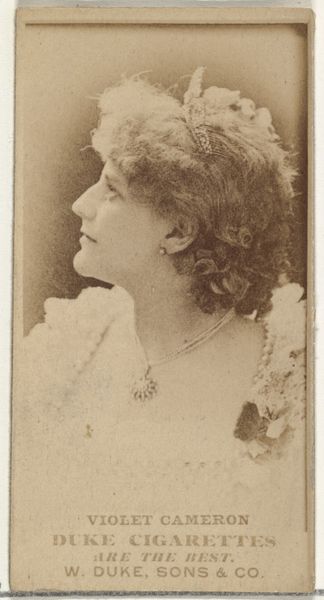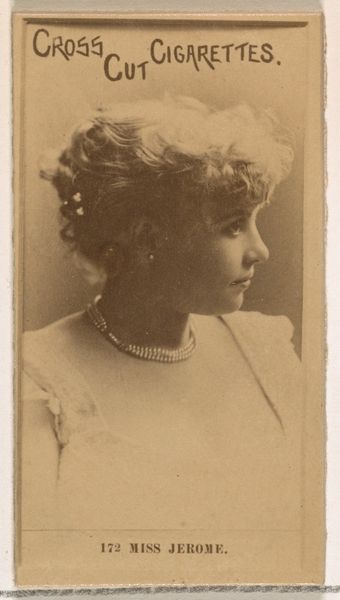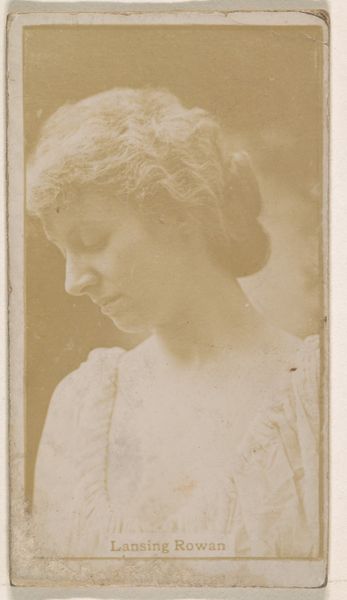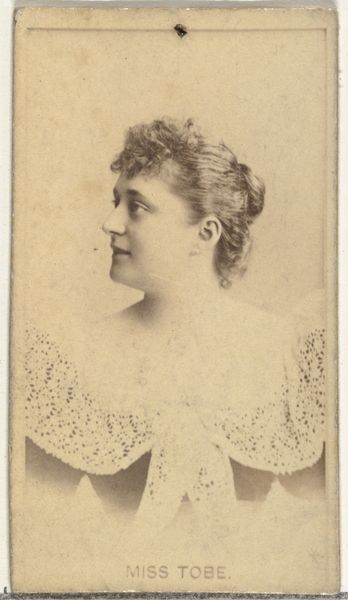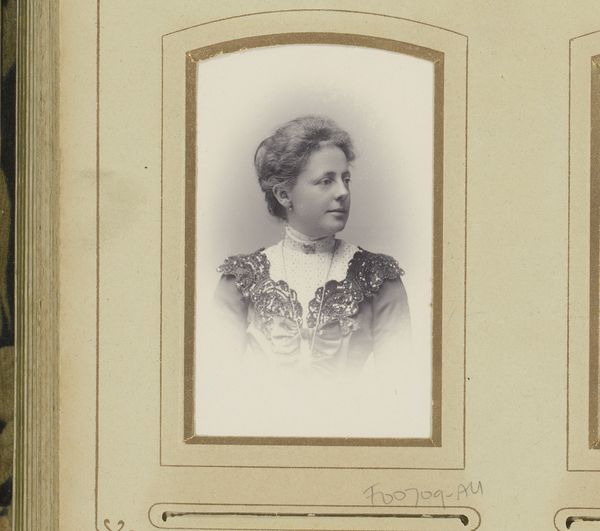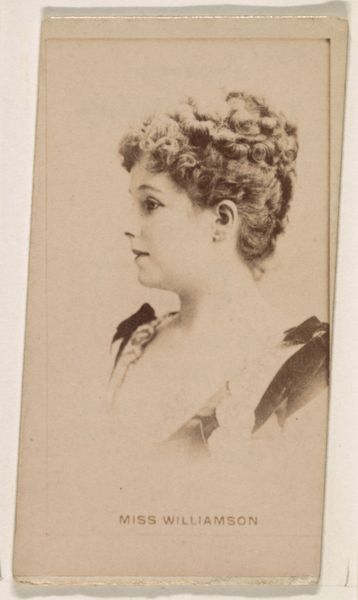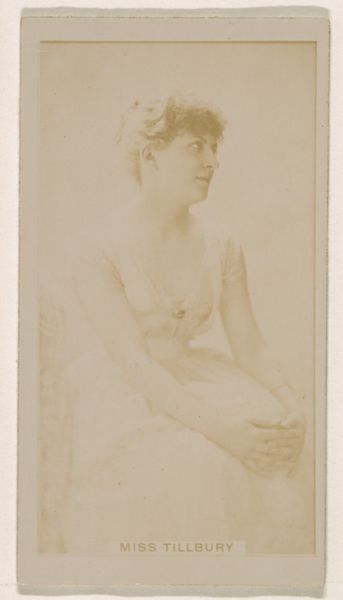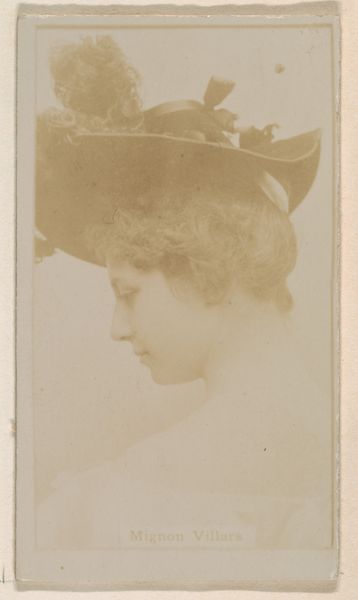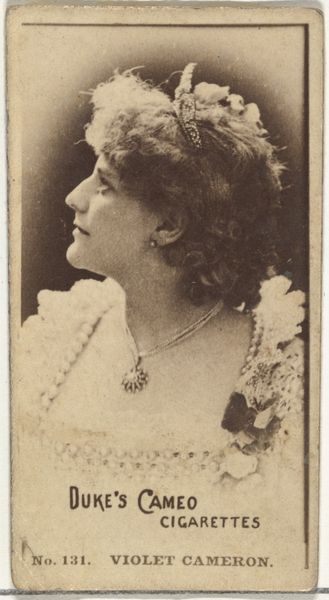
Dimensions: height 135 mm, width 98 mm
Copyright: Rijks Museum: Open Domain
Curator: Welcome. Before us is a gelatin silver print, "Portret van een vrouw", attributed to J. Weston and Son, likely created between 1880 and 1940. Editor: Immediately, a feeling of quiet melancholy washes over me. The sepia tones contribute to a certain vintage aura. It almost feels like gazing upon a forgotten memory, wouldn’t you say? Curator: The tonal range indeed creates a muted, almost monochromatic palette. Note how the composition adheres to established portrait conventions, placing the subject in profile, allowing careful study of the facial structure and coiffure. The image is well-lit. Editor: True, but consider this: women during this period were entering the public sphere but were simultaneously constricted by social expectations. This photograph may offer glimpses of individuality within that confinement. I wonder what her aspirations were, her internal landscape, if you will. Curator: That lace detailing, the intricate patterns repeated, adds layers to the photographic plane. It speaks of ornamentation as an aesthetic and visual technique. And, how this formal composition of shape and symmetry allows for semiotic reading. Editor: Of course, her garments also denote her class. While accessible photography allowed wider representation, this was not universal access. This portrait then could represent bourgeois aspirations or reinforce social hierarchies depending on the subject’s intent and the commissioning of the piece. Is she presenting herself? Is she being presented? Curator: Photography’s reproducible nature raises fascinating questions about authorship and context. In some regards it flattens visual information, allowing for an easier way of examining form and function, which enables a kind of democratization. Editor: Agreed, but let’s not forget those underrepresented voices lost in the cracks of art history. It is as important to study these portraits as aesthetic artifacts, but also, historical evidence. They speak of social conditions beyond the formal framing. Curator: An intriguing discussion on the layers of meaning in "Portret van een vrouw". The confluence of art history and societal context brings an enriched experience. Editor: Indeed, hopefully our reflections today shed new light on this quiet, evocative image.
Comments
No comments
Be the first to comment and join the conversation on the ultimate creative platform.
